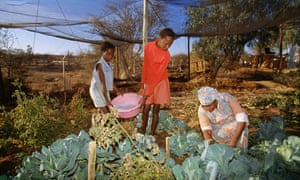According to one source, 'extreme measures' are needed in the country, and not enough is being done to alleviate the water crisis. In mid-2016, the country declared a state of emergency as it faced its most severe drought in over 25 years. This severely impacted crops and agriculture -- Coca Cola even decided to halt production of canned drinks in the country and instead import them in from South Africa, rendering 815 people jobless.
Many citizens became upset after the country mandated a 30% cut in water use-- hair dressers, for example, were suddenly unable to provide their services.

Interestingly, social media campaigns have been extremely effective at targeting irresponsible water companies. Other water conservation efforts have united people and spurred better educational and awareness programs.
The water crises is still very real in the country. Like Cape Town, we ought to be wary of our decision to impose on a country that is struggling to satiate its own citizens.
Michelle Howard, 2/24 (written for the week of 2/15)
References:
https://www.theguardian.com/sustainable-business/2016/jul/13/namibia-drought-coca-cola-meat-construction-industry-water-crisis-climate-change
https://www.namibian.com.na/161330/archive-read/Water-crisis-continues-while-dam-levels-rise
Hopefully it doesn't get to the level of Cape Town, which has a current cap of 50 L of water per person per day.
ReplyDelete-Mark Buckup